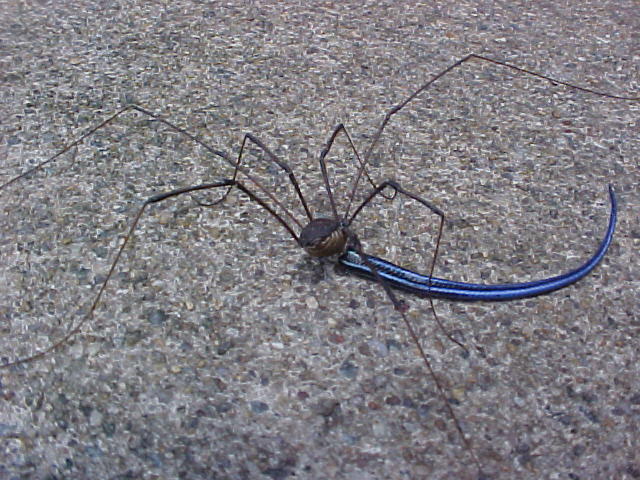|
Paecilaema
''Paecilaema'' is a genus of harvestmen in the family Cosmetidae. It was first described by Carl Ludwig Koch Carl Ludwig Koch (21 September 1778 – 23 August 1857) was a German entomologist and arachnologist. He was responsible for classifying a great number of spiders, including the Brazilian whiteknee tarantula and common house spider. He was born ... in 1839. References Further reading * (eds.) (2007). ''Harvestmen – The Biology of Opiliones''. Harvard University Press, USA. External links * * Cosmetidae Harvestman genera Taxa named by Carl Ludwig Koch {{Opiliones-stub ... [...More Info...] [...Related Items...] OR: [Wikipedia] [Google] [Baidu] |
Cosmetidae
Cosmetidae is a family of harvestmen in the suborder Laniatores. With over 700 species, it is one of the largest families in Opiliones. They are endemic of the New World with a Nearctic-Neotropical distribution where a large fraction of the diversity of Opiliones are represented by this single family. Cosmetidae have the northern extent of their range into the USA, where a small number species occur in the southern states. However, the family is especially diverse in Mexico, Central America and northern South America; especially the Andean realms. Their range also extends further south into Argentina and southern Brazil, but they are absent in Chile. Cosmetidae are prevalent in Amazonian region, but only relatively few also occur in Brazilian Atlantic Forest. Several species are also found in the Caribbean. Description This family comprises members that may have elaborate white or yellow (but rarely also green/orange/red) markings such as stripes and spots on the dorsal body an ... [...More Info...] [...Related Items...] OR: [Wikipedia] [Google] [Baidu] |
Carl Ludwig Koch
Carl Ludwig Koch (21 September 1778 – 23 August 1857) was a German entomologist and arachnologist. He was responsible for classifying a great number of spiders, including the Brazilian whiteknee tarantula and common house spider. He was born in Kusel in the Holy Roman Empire, and died in Nuremberg, Germany. Carl Ludwig Koch was an inspector of water and forests. His principal work ''Die Arachniden'' (1831–1848) (16 volumes) was commenced by Carl Wilhelm Hahn (1786–1836). Koch was responsible for the last 12 volumes. He also finished the chapter on spiders in ''Faunae insectorum germanicae initia oder Deutschlands Insecten'' [Elements of the insect fauna of Germany] a work by Georg Wolfgang Franz Panzer (1755–1829). He also co-authored, with Georg Karl Berendt, an important monograph ''Die im Bernstein befindlichen Myriapoden, Arachniden und Apteren der Vorwelt'' (1854) on arachnids, myriapods, and wingless insects in amber based on material in Berendt's collection, now ... [...More Info...] [...Related Items...] OR: [Wikipedia] [Google] [Baidu] |
Harvestmen
The Opiliones (formerly Phalangida) are an Order (biology), order of arachnids, Common name, colloquially known as harvestmen, harvesters, harvest spiders, or daddy longlegs (see below). , over 6,650 species of harvestmen have been discovered worldwide, although the total number of extant taxon, extant species may exceed 10,000. The order Opiliones includes five suborders: Cyphophthalmi, Eupnoi, Dyspnoi, Laniatores, and Tetrophthalmi, which were named in 2014. Representatives of each extant suborder can be found on all continents except Antarctica. Well-preserved fossils have been found in the 400-million-year-old Rhynie cherts of Scotland, and 305-million-year-old rocks in France. These fossils look surprisingly modern, indicating that their basic body shape developed very early on, and, at least in some taxa, has changed little since that time. Their Phylogenetics, phylogenetic position within the Arachnida is disputed; their closest relatives may be camel spiders (Solifugae ... [...More Info...] [...Related Items...] OR: [Wikipedia] [Google] [Baidu] |
Harvestman Genera
The Opiliones (formerly Phalangida) are an order of arachnids, colloquially known as harvestmen, harvesters, harvest spiders, or daddy longlegs (see below). , over 6,650 species of harvestmen have been discovered worldwide, although the total number of extant species may exceed 10,000. The order Opiliones includes five suborders: Cyphophthalmi, Eupnoi, Dyspnoi, Laniatores, and Tetrophthalmi, which were named in 2014. Representatives of each extant suborder can be found on all continents except Antarctica. Well-preserved fossils have been found in the 400-million-year-old Rhynie cherts of Scotland, and 305-million-year-old rocks in France. These fossils look surprisingly modern, indicating that their basic body shape developed very early on, and, at least in some taxa, has changed little since that time. Their phylogenetic position within the Arachnida is disputed; their closest relatives may be camel spiders (Solifugae) or a larger clade comprising horseshoe crabs, Ricinulei, ... [...More Info...] [...Related Items...] OR: [Wikipedia] [Google] [Baidu] |

